

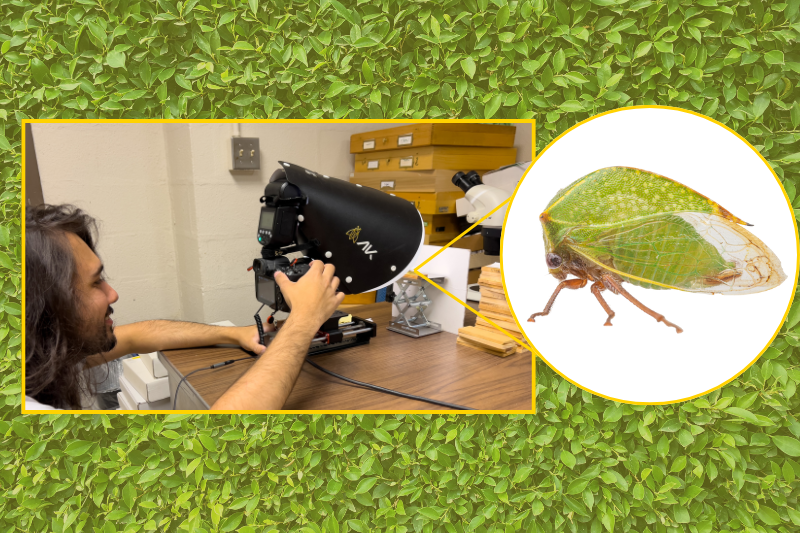
Insect discovery hub
Photos by Katie Young and courtesy of Solomon Hendrix July 21, 2025
UD’s Insect Research Collection provides Solomon Hendrix the tools to turn a passion for identifying insects into a future in entomological discovery
At the height of the COVID-19 pandemic, Solomon Hendrix, then a recent high school graduate, spent a lot of time outside photographing insects.
“I had been interested in insects and entomology for a time as a hobby, but I didn’t see it as a professional career path until I became interested in collecting and identification,” said Hendrix, who recently graduated from the University of Delaware with a bachelor of science degree in insect ecology and conservation.
Hendrix, who took a gap year between high school and college, posted his photographs of insects on citizen science sites like iNaturalist and BugGuide, and he connected with many entomologists and taxonomists online.
One of those entomologists was Charles Bartlett, associate professor in the Department of Entomology and Wildlife Ecology and director of UD’s Insect Research Collection (UDCC).
“Once I learned that he was interested in taking on an undergraduate research assistant, I applied to UD’s entomology program,” Hendrix said. “I knew by then that my priority was to become a taxonomist.”
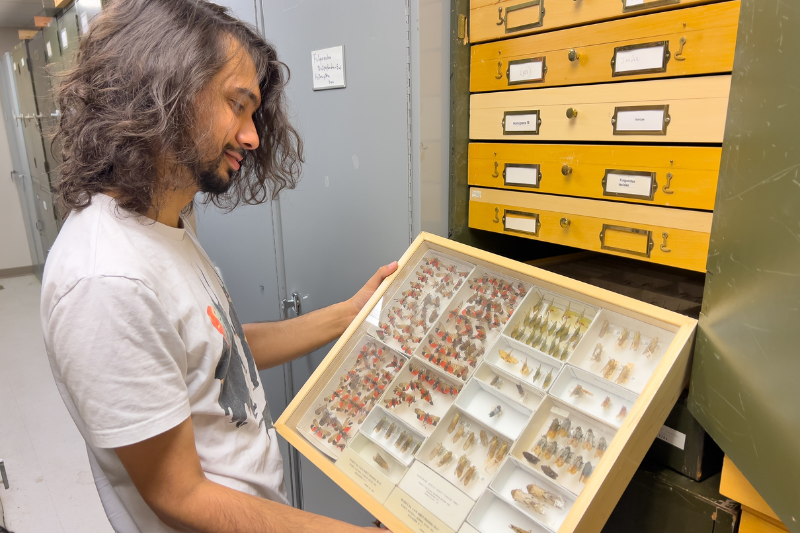
The bulk of Bartlett and Hendrix’s work lies on the second floor of Townsend Hall. Bartlett and Hendrix described the collection as a “hidden gem” at the University.
“The collection is very active,” Hendrix said. “We send out loans to different institutions and researchers worldwide. It’s an invaluable resource and an important research hub for the University. It’s something priceless.”
The collection, which began as one single cabinet in the 1880s with the construction of the UD Agricultural Experimental Station, has accumulated specimens from faculty, students, local experts and Delaware residents.
“Our collection is an important resource that’s taken a very long time to build,” Bartlett said. “It takes generations to build a new collection, especially of this size. Often people put things in the museum of their own volition, so it takes a long time to assemble.”
Now with more than 350,000 specimens, the collection has become a research and educational center for entomology students, like Hendrix, interested in taxonomy.
While at the UDCC, Hendrix published an astounding total of 12 academic research papers during his undergraduate career on his work identifying and studying planthoppers, a group of insects known for their striking resemblance to leaves and hopping as their mode of transportation.
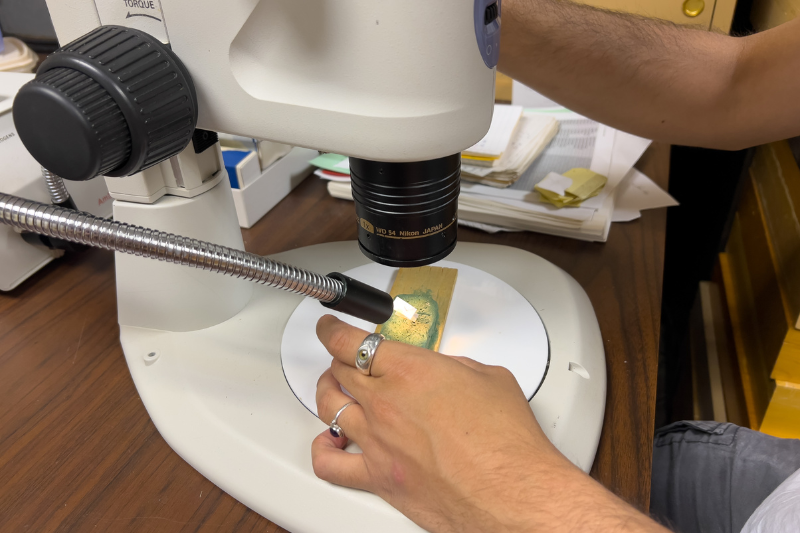
Through his research, Hendrix identified 13 new genera of planthopper that had yet to be described by other experts in the field — a feat that most undergraduates cannot boast.
“This is out of the norm in taxonomy,” Bartlett said. “Finding new species is not that difficult. Once you know all of the described species, then all you have to do is find one that’s not that. What’s difficult is the initial knowledge needed to recognize the known species.”
Although Hendrix came to UD with a skillset of photographing and identifying insects, he credits his work with Bartlett and the UDCC with teaching him how to more accurately identify insects through meticulous dissections.
“You can’t really identify most of these insects with absolute confidence without dissecting them,” Hendrix said. “Much of my undergraduate studies involved meticulous examination and photography, analyzing the minute differences between specimens and knowing what differences to look for.”
In addition to dissections, distinguishing one insect from another can get complicated, involving the use of molecular lab techniques, research on where the two insects came from and their varying morphology.
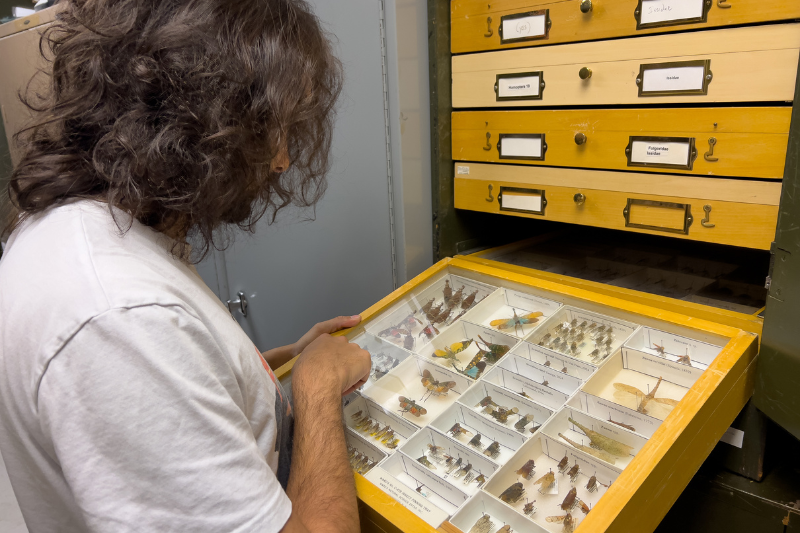
“There are various ways to tell that things are not the same using molecular tools,” Bartlett said. “But knowing the species, knowing the names, so that you can do the molecular work, is also important, and that’s why collections work is so integral for entomology. Molecular work is important for sure, but so is morphological work.”
With the basis of the UDCC and his past interest in entomology, Hendrix was able to build a strong foundation of knowledge about known species in order to further characterize and identify new ones.
After finishing up his work at the UDCC this summer, Hendrix will begin his Ph.D. in entomology, continuing his research on planthoppers, at the University of Arizona.
“I’ll be studying the diversity and evolution [of hoppers] in the sky islands of Arizona, which are isolated mountain ranges in the southeast,” Hendrix said. “The isolation of these mountains, coupled with their high elevation, results in a remarkable plant diversity that promotes diversity of hoppers, as true hoppers are herbivores.”
Hendrix hopes to pursue either a career in research through a professorship or working as a horticultural inspector for the U.S. Department of Agriculture Animal & Plant Health Inspection Service (APHIS) identifying potential pests entering the United States through ports.
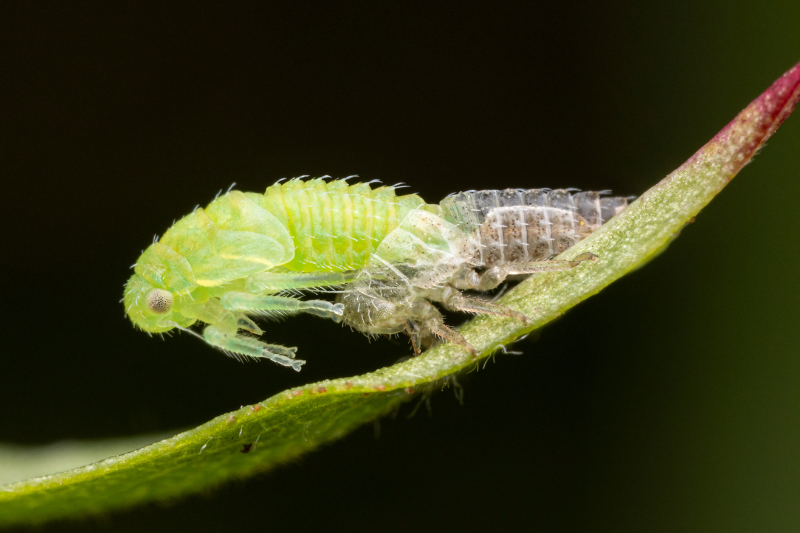
Bartlett explained that experience with collections can lead to great careers in academia, Cooperative Extension, APHIS, and working for the government at the state and federal levels.
“Doing this type of work, as insect identifiers for the government for example, requires a good foundation, and I am happy to give that to my students through the UDCC,” Bartlett said. “Actually, two of my previous students work for the Pennsylvania Department of Agriculture and were some of the first people to identify the spotted lanternfly [a destructive invasive species] in Pennsylvania and knew it wasn’t supposed to be there.”
Working at the UDCC allows students to build that foundational knowledge needed for a career in entomology while also facilitating exploration in the field by providing a place to identify and characterize new species and genera.
“To me, taxonomy is incredibly exciting,” Hendrix said. “That feeling of discovery just never seems to dull, and it’s a bridge between other biological sciences as well. It’s a shared language. There is so little that we know about the classification of life, and it’s an amazing effort to be a participant of. Being able to communicate that excitement of discovery and inspiring more taxonomists would be incredible.”
Contact Us
Have a UDaily story idea?
Contact us at ocm@udel.edu
Members of the press
Contact us at mediarelations@udel.edu or visit the Media Relations website

